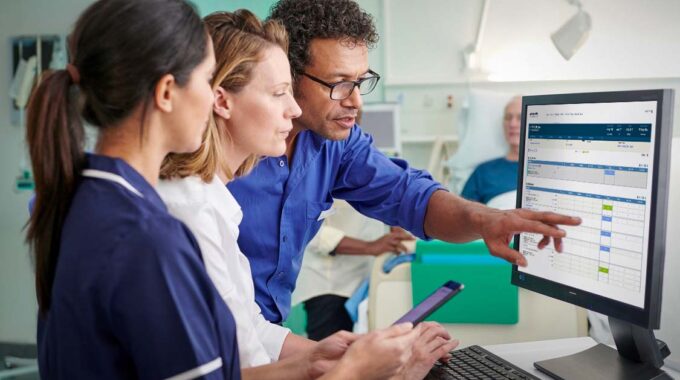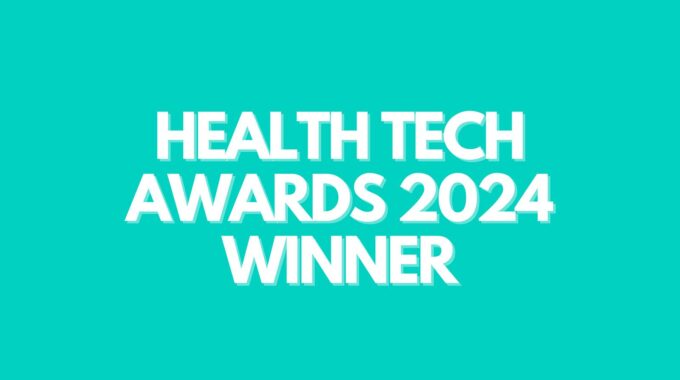A wave of NHS trusts is set to transform care at scale, fueled by Nervecentre’s…
Paul Volkaerts, CEO, Year End Review
We are approaching the end of another remarkable financial year at Nervecentre, a year in which I believe our organisation took another huge leap forward towards our goal of helping hospitals use ICT to become as safe and efficient as technology allows. The key to making the most of technology is not about selecting a product, but about adopting a culture of pace and choosing a supplier that supports that way of working. I’m more optimistic now than at any point in the last 7 years since Nervecentre started, that the technology used by the NHS will completely transform and that organisations that are innovative, agile, flexible and accommodating will be best placed to satisfy those complex needs. Change in the NHS will very much be a journey and not a destination.
We have always been fortunate enough to develop products that clinicians love to use, and pace and adaptability play a strong role in that. Clinicians have a very broad set of challenges, and they love to see a supplier who can listen to their unique requirements and deliver change in a reasonable time frame. This is partly about designing adaptability into the system, and partly about our culture as a supplier. This has led to some very high levels of utilisation amongst doctors and nurses. In our most progressive hospitals we see observations on average entered every 10 seconds, clinical notes updated every 3 seconds, instant messages sent thousands of times per day. On average, in any one hospital, clinicians are interacting with Nervecentre every second of every day.
This year we have seen some great examples of how we have leveraged that high utilisation to improve patient flow in hospitals. The crux of a good patient flow solution is to ensure the information within it is up-to-the-minute accurate. Only if the data is trust-worthy does it allow the hospital to rely on the data, without requiring nurses with clipboards walking around wards checking for potential beds. We have seen many examples of solutions that provide dashboards but no-one trusts the data, so we have focused our approach on accuracy and utilisation as primary objectives, and this is leading to our data becoming completely trusted to drive operational decisions within the hospital, from bed-manager to CEO.
Our biggest achievement of this year has undoubtedly been the delivery of our new Workflow and Information System, WISE, into the new Emergency Department at University Hospitals of Leicester – the busiest ED in the country with up to 800 patients per day flowing through. It was the first time we had replaced an electronic system of any kind, normally our projects replace paper, so it was interesting to see how we stepped up to the challenge. The transition was incredibly smooth, switching from EDIS to Nervecentre on time and budget without any interruption to their ED service; and adding a wealth of new capabilities such as SystmOne integration and ECDS (draft) compliance as well of course as mobile technology.
This project in many ways characterises many aspects of our culture and approach. We like to focus very much on clinical requirements to make sure the solution is well adopted, and deliver using processes that are truly agile, working at pace and in strong partnership with the Trust.
Although the improvements in patient flow and the development of an ED solution were our two key focus areas for the last year, we executed really well too in many other areas. We delivered a lot of other exciting innovations, such as mobile clinical photography, we helped many of the Trusts we work with implement a Red/Green day process within Nervecentre, and we also focused upon operational improvements to our solution – reducing downtime for upgrades towards our goal of 5-10 minutes, and massively simplifying configuration management between test, training and live systems. We are innovating faster now than ever before.
Financially, it was great to be recognised as the 5th fastest growing technology company in the UK by the Deloitte Fast 50, and amongst the fastest growing in Europe by the Financial Times 1000. This year we continued to have strong financial performance, adding contracts from 6 new Trusts, including two in new geographies and one contract to replace a competitive electronic observations product. We are seeing fewer Trusts buy single-module solutions, such as electronic observations, and much more focus upon selecting strategic platforms and strategic suppliers, and we are very fortunate that our investments in broadening our product help us to satisfy those broader needs. The economic climate has been tough and we have seen, and will continue to see, consolidation within the healthcare systems space as suppliers who struggle to win new business lose confidence and falter.
To support our continued growth and new customers, we have grown the organisation significantly, with 12 people joining just in the last 3 months. These have enhanced our company across the board from clinical to technical to project management. We take hiring very seriously, as we are so protective of the culture and values that drive our day-to-day engagements. In fact our culture and values have also grown in importance to us this year. More than ever we hear that Trusts choose to work with us because of these attributes, and because they trust us. Trust us to deliver on time and within budget, trust us to listen and understand, trust us to apply our clinical expertise to their programmes, trust us to work at pace. Trusts are choosing a journey not a product; it is no longer acceptable to deploy a system and use it for 5 years, it has to grow and adapt.
To maximise the benefit of this journey, ICT organisations within Trusts need to invest and adapt to work at pace too. Our most progressive Trusts upgrade the system up to three times per year, to take advantage of our continuous developments. This creates a culture of change, that helps doctors engage as they see their input turn into deliverables, but it does require a new operational approach to support that change – having change teams in place constantly instead of for a fixed-term project.
I was honoured to recently receive the public sector entrepreneur of the year award at the 2017 Enterprise Awards. Theses awards celebrate the UK’s finest entrepreneurs in 13 categories. They uniquely focus on the achievements of founders, with applicants judged on a number of factors including vision, growth, innovation, funding, use of capital, use of resources, strategy, execution, ambition, and determination to succeed. to receive such a award was a huge achievement.
Over the next 12 months you will see us continue to operate at pace, and continue to inspire others to do so. Technological enhancements are moving so fast that the opportunity to use those advancements to improve safety and efficiency are greater now than ever before.
Paul Volkaerts
Founder and CEO, Nervecentre Software




This Post Has 0 Comments